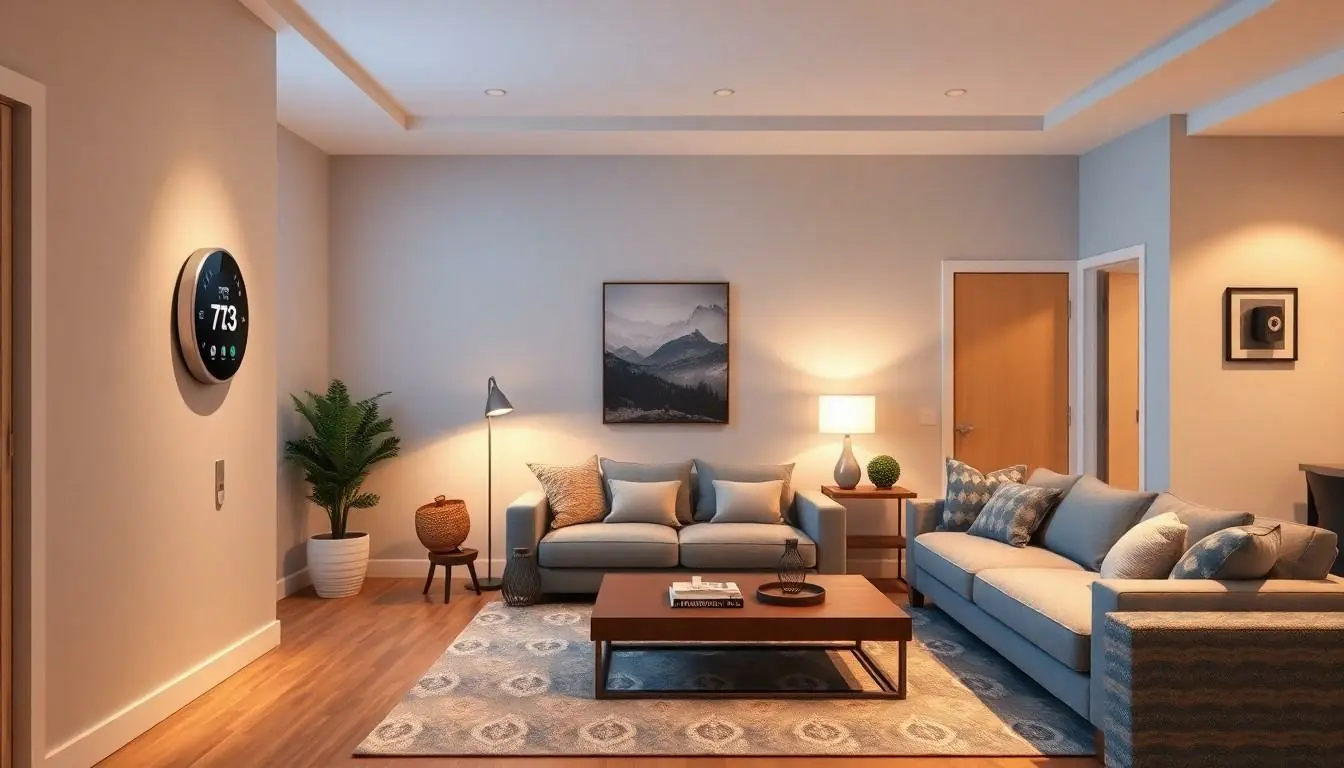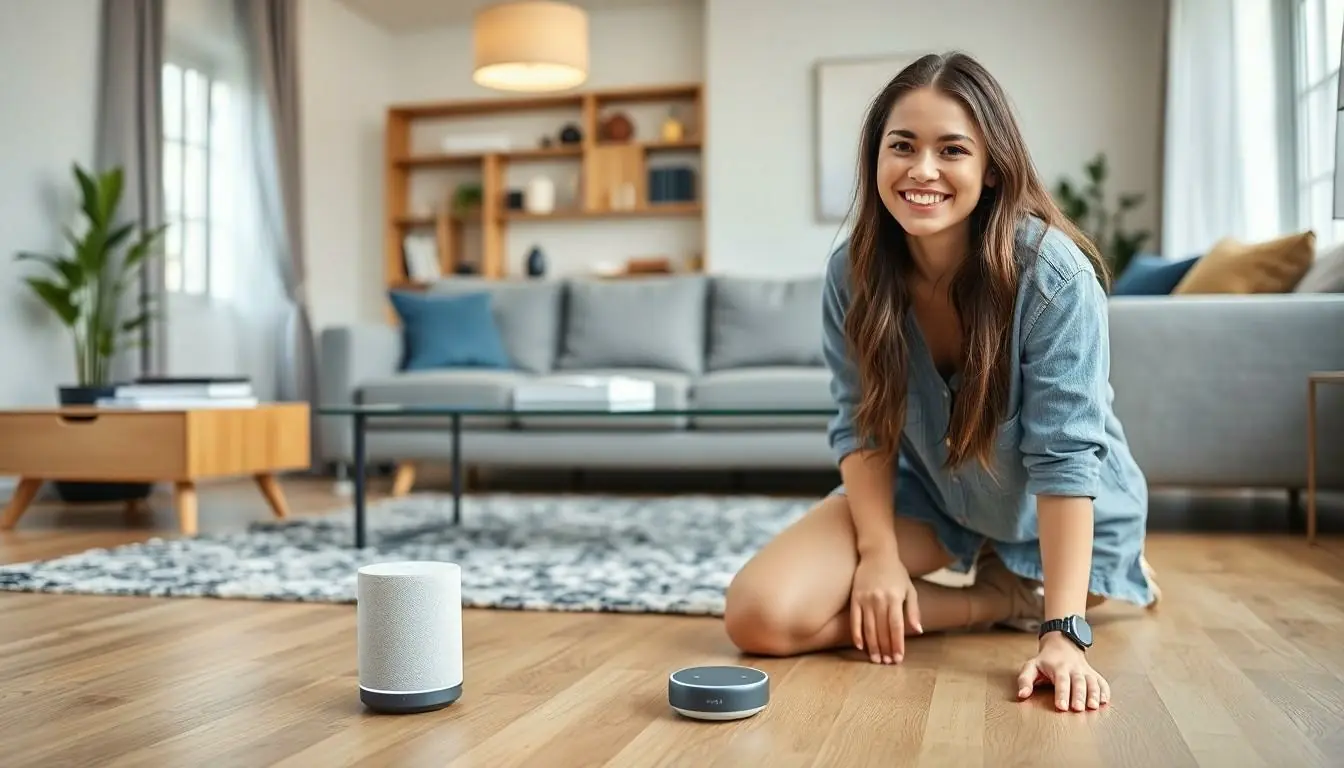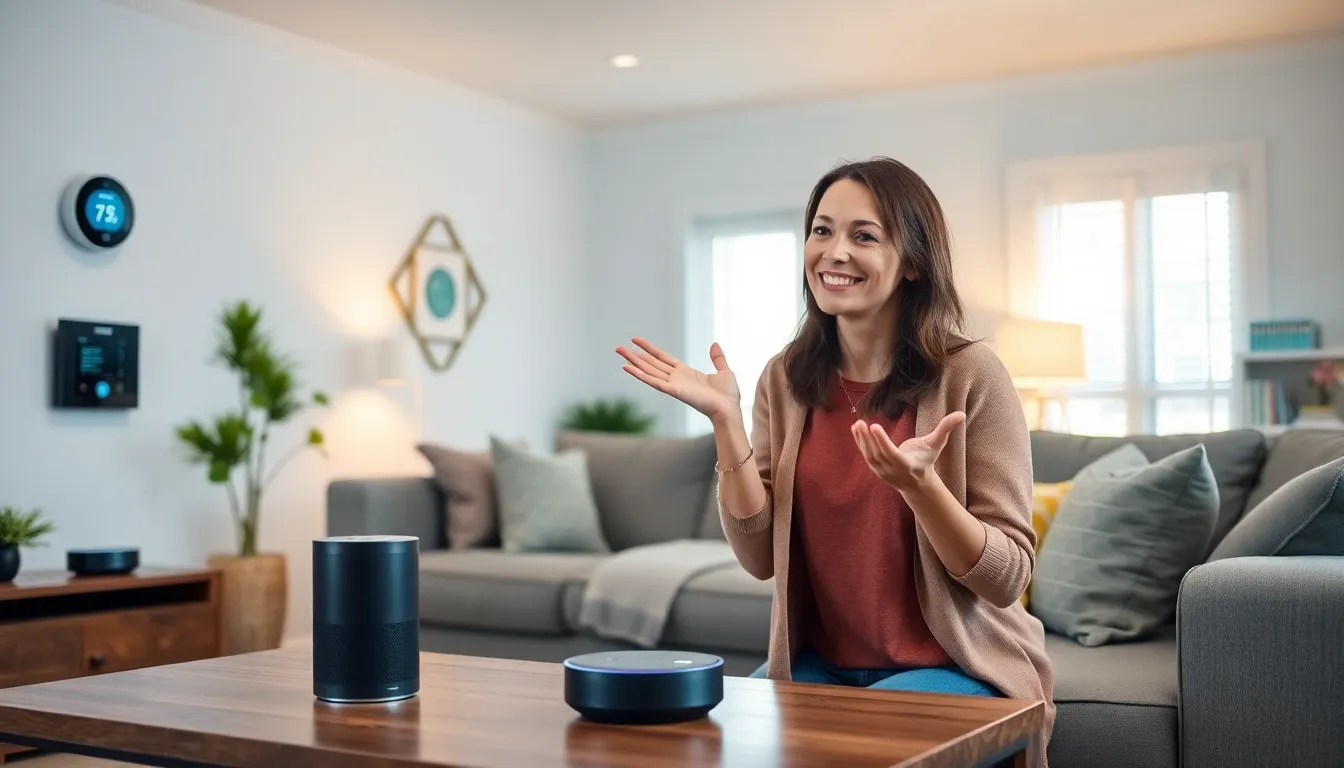Imagine walking into your home and having the lights flick on, your favorite playlist start playing, and the thermostat adjust to the perfect temperature—all without lifting a finger. Sounds like magic, right? Well, it’s not magic; it’s home automation. This tech-savvy revolution is transforming ordinary houses into smart homes, making life easier and a whole lot more fun.
Installing a home automation system isn’t just for tech geniuses or millionaires. It’s a smart investment for anyone looking to boost their home’s efficiency and security. From smart locks to voice-activated assistants, the options are endless. So why not turn your home into a futuristic haven? Get ready to embrace convenience, save some energy, and maybe even impress your friends with your new tech-savvy lifestyle. After all, who wouldn’t want to live in a home that practically runs itself?
Table of Contents
ToggleOverview of Home Automation System Installation
Home automation system installation streamlines the process of turning a regular house into a smart home, enhancing convenience and efficiency. Different types of smart devices integrate into these systems, including smart thermostats, security cameras, and automated lighting. Selecting the right components depends on personal preferences and specific needs.
Planning is essential before installation. Assessing current home infrastructure ensures compatibility with smart technology. Understanding how devices communicate is crucial; most rely on Wi-Fi, Zigbee, or Z-Wave protocols.
Installing a central hub often simplifies management. A central hub connects various devices, allowing control through one application. This integration provides a cohesive smart home experience.
Following installation, configuring individual devices allows customization. Adjusting settings for automated schedules can optimize energy usage. Monitoring system performance after installation ensures devices function correctly and efficiently.
Troubleshooting common issues like connectivity problems or device incompatibility may arise. Conducting regular software updates protects against security vulnerabilities. Exploring tech forums offers additional support where users share solutions.
Users frequently find training resources helpful. Many manufacturers provide online tutorials and customer service support. Engaging with community forums can enhance understanding of features and maximize benefits.
Investing in smart home technology results in long-term savings. Lower energy consumption translates to reduced utility bills. Improved security often leads to peace of mind, making home automation a valuable enhancement.
Benefits of Home Automation Systems

Home automation systems offer multiple advantages that significantly improve daily living. From enhanced security to energy efficiency, these systems transform homes into smart environments that cater to modern lifestyles.
Enhanced Security Features
Enhanced security features rank among the top benefits of home automation systems. Smart locks enable remote access control, allowing homeowners to lock or unlock doors from anywhere. Security cameras provide real-time monitoring, which can alert residents to unexpected activity. Intrusion alarms can automatically notify authorities, ensuring prompt responses to potential threats. Home automation also allows for scheduling lights to create the illusion of occupancy, deterring burglars. These interconnected devices combine to create a comprehensive security network that protects homes effectively.
Energy Efficiency
Energy efficiency plays a crucial role in the appeal of home automation systems. Smart thermostats optimize heating and cooling by learning user schedules, adjusting temperatures accordingly. Automated lighting systems enable the control of lights based on occupancy, reducing energy waste. Moreover, smart appliances can operate during off-peak hours, leading to lower utility bills. Energy usage data helps homeowners track consumption patterns, allowing for more informed decisions about usage. By integrating these technologies, households can achieve significant energy savings while minimizing their environmental impact.
Types of Home Automation Systems
Home automation systems come in various types, each designed to enhance security, convenience, and energy management in households.
Smart Lighting Solutions
Smart lighting solutions enable control over home illumination remotely or through voice commands. These systems often integrate with smartphones and hubs, allowing easy customization of lighting schedules. Through dimming capabilities, energy savings can increase, while motion sensors turn lights on when needed. Different color temperatures create atmospheres for any occasion, improving both comfort and aesthetics. Energy-efficient LED bulbs further contribute to lower electricity bills, making smart lighting a practical choice for modern homes.
Home Security Systems
Home security systems provide homeowners with peace of mind through enhanced surveillance and control. Smart cameras offer real-time monitoring, enabling users to access feeds from mobile devices. Additionally, smart locks allow for keyless entry, improving convenience and security. Alerts notify homeowners of suspicious activity, while integration with other smart devices can trigger alarms or notifications. These security solutions often offer remote access features, ensuring users can monitor their property from anywhere, increasing overall safety.
Smart Thermostats
Smart thermostats adjust home temperatures automatically based on user preferences and schedules. These devices learn from occupants’ habits, optimizing heating and cooling for energy savings. Remote management through mobile apps allows adjustments when away from home. Reports on energy usage help homeowners identify potential savings areas, contributing to a more efficient home environment. Integration with other smart devices enhances the ability to maintain a comfortable and energy-conscious living space.
Installation Process of Home Automation Systems
Installing a home automation system requires careful planning and execution. Following the right steps ensures a smooth transition to a smarter living environment.
Pre-Installation Considerations
Assessing existing infrastructure plays a fundamental role in successful home automation. Compatibility checks of the home’s electrical and internet systems prevent future technical issues. Determining specific needs for automation assists in choosing the right devices. Establishing a budget provides clarity on what can be achieved within financial constraints. Finally, exploring available devices helps homeowners understand options for security, lighting, and energy management.
Step-by-Step Installation Guide
Start by gathering all necessary tools and equipment. Identifying the main control hub acts as the foundation for device integration. Positioning smart devices strategically enhances connectivity and effectiveness. Connecting devices to the hub typically involves using a smartphone app for easy setup. During integration, following app instructions ensures optimal performance. Testing each device for functionality confirms the successful installation of the system. Finally, customizing settings according to personal preferences completes the setup process, allowing homeowners to fully enjoy their smart home benefits.
Troubleshooting Common Issues
Common issues can disrupt the functionality of home automation systems. Understanding these problems helps streamline resolution efforts.
Connectivity Problems
Connectivity issues often arise with smart devices. Devices may fail to connect to the Wi-Fi network, leading to operational challenges. Confirming that the router is within range of each smart device proves crucial. Strong signal strength ensures better connectivity. Restarting the router and devices can resolve temporary disruptions. Switching to a 2.4GHz network instead of a 5GHz one may improve performance, as many devices operate better on the former. Regularly checking for firmware updates can prevent compatibility issues.
Device Compatibility
Device compatibility is vital for seamless home automation. Before installation, reviewing a device’s specifications helps ensure it integrates smoothly with existing systems. Some devices may only be compatible with specific hubs or apps. Manufacturers often provide compatibility lists to assist users. If discrepancies occur, checking firmware updates on both devices can rectify issues. Incompatible devices might require alternative solutions, such as using bridges or boosters to facilitate connection. Keeping the system updated ensures optimal compatibility and functionality within the automation ecosystem.
Embracing a home automation system can significantly enhance daily living. With improved security and energy efficiency homeowners can enjoy peace of mind while reducing utility costs. The installation process may seem daunting but with careful planning and the right resources it becomes manageable for anyone.
By integrating smart devices into their homes individuals can create a customized environment that caters to their needs. Regular updates and community support further ensure that users can maximize their smart home experience. Investing in this technology not only elevates comfort but also contributes to a sustainable future.





